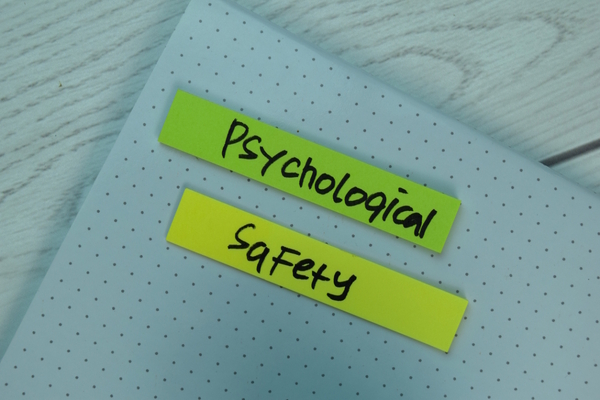Transforming recruitment with AI: Part 1 – finding and attracting talent
In the first of three articles on the ways that technology can be used to enhance recruitment, Jeremy Swinfen Green explores the ways that AI can be used to locate and engage the best candidates

Human resources (HR) departments face mounting pressure. There is a well-established shortage of many skills, compounded by an epidemic of “quiet quitting” as employees look to balance work and personal life. This is made worse by the priorities embraced by many younger employees, who can be less focused on career progression and more concerned about how their ethical choices are reflected by their place of work and seen by their contemporaries.
Faced with these challenges, HR executives need not only identify top talent but also to streamline the entire recruitment process. Happily, rapid advances in technology, particularly artificial intelligence (AI), are giving HR professionals powerful tools that can transform their approach to talent acquisition.
Targeting candidates
The first question any recruiter has to ask is, where can I find the best candidates? And those candidates may not be what they are expecting, for example “passive” job seekers – people who are not actively looking for a job but could be persuaded to move. Of course, adverts in trade magazines or job sites can lead to applications, but these are not always from the best candidates.
AI can analyse data relevant to candidates such as historical hiring data or social media activity to identify the characteristics and media preferences of ideal candidates. This analysis is valuable in locating passive as well as active job seekers.
At the same time, an analysis of ideal employee preferences might well identify weaknesses in the employer brand that need to be fixed. A strengthened employer brand that enables potential recruits to engage with them, for example by publishing blog posts on topical issues that ask for comments, can increase engagement with potential recruits.
Effective job ads
Once you figure out where potential recruits gather, employment opportunities must be communicated effectively to them. The wording of job adverts, or personalised messages to individuals and small groups, can be tailored to specific audience segments, increasing relevance and engagement.
Using AI for keyword and competition analysis can result in phrasing that uses more effective language and tone that will appeal to different demographic groups. Particular words and phrases may deter certain candidates or contribute to bias, and AI can suggest alternative language to make the ad more attractive and inclusive to a diverse pool of candidates. For instance, jargon-free language can be more effective at attracting neurodiverse applicants, while avoiding “masculine” phrasing such as “driven” and “challenging” can increase the number of female applicants.
Proactive search
To engage with the best candidates, whether they are active or passive job seekers, the most effective HR professionals with be proactive. AI-powered recruitment platforms can facilitate targeted outreach to potential candidates based on their skills, experiences and interests. By personalising communication and tailoring messages to resonate with candidates’ backgrounds and preferences, recruiters can increase engagement and encourage diverse candidates to apply.
Even for jobs with low skill requirements, it can be worth dynamically personalising job ads based on individual preferences; this could be as simple as mentioning location or hours of work in the bob advert headline, although it can extend to more subtle elements such as words associating the employer with likely preferences around, say, sustainability or other ethical issues.
HR professionals can also use AI to build “talent pools” – collections of candidates for future recruiting needs. They can use AI to analyse data about individuals, including keeping tabs on where they are currently working, monitoring and assessing their skillsets over time and predicting their suitability for different roles as they arise.
Monitoring effectiveness
During a stressful recruitment campaign, especially one that involves large numbers of new recruits, it can be hard to know whether things are going well. This is another area where AI can play a useful part.
AI can monitor the performance of job ads in real time and provide insights into their effectiveness. By tracking metrics such as click-through rates, application rates and candidate demographics, AI can help identify underperforming ads enabling recruiters to make decisions supported by data designed to improve outcomes.
One way of doing this is with “A/B testing” where automated tools run experiments with different versions of job ads to identify the most effective messaging, format and media placement. By testing variations in language, layout and imagery, AI helps recruiters understand which elements resonate best with the best candidates.
In addition, AI can be used to analyse historical data on job performance and candidate responses, to identify which elements of a job ad are most likely to attract the most qualified candidates.
Being fair
Automated recruitment processes powered by AI have in the past been criticised for bias. These criticisms are fair, but they are not the result of using AI. Rather they are the result of using AI that has been prepared, or “trained” badly. There is now increasing understanding that using AI systems trained on data based around traditional recruits (typically young while males) will result in more of the same, disadvantaging women and people from minority ethnic groups.
Recruiters should always question the degree to which any AI-powered process will avoid this type of bias. And they can use AI to monitor whether bias is being avoided. By flagging any potential issues, AI enables HR professionals to take corrective action and maintain a fair and transparent hiring process while at the same time achieving compliance with diversity and inclusion initiatives and regulatory requirements.
The second article in this series will explore in detail how AI can be used to ensure a fair and effective selection process.

Jeremy Swinfen-Green
Most Viewed
Winston House, 3rd Floor, Units 306-309, 2-4 Dollis Park, London, N3 1HF
23-29 Hendon Lane, London, N3 1RT
020 8349 4363
© 2025, Lyonsdown Limited. Business Reporter® is a registered trademark of Lyonsdown Ltd. VAT registration number: 830519543





